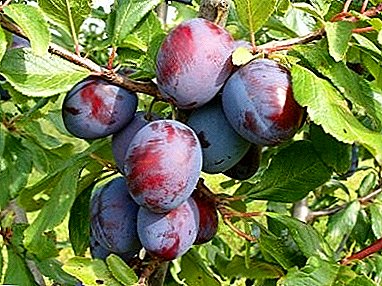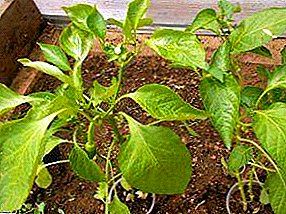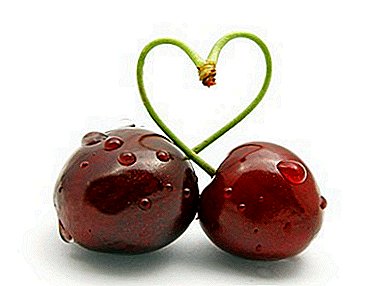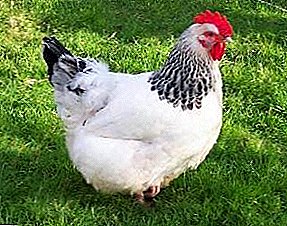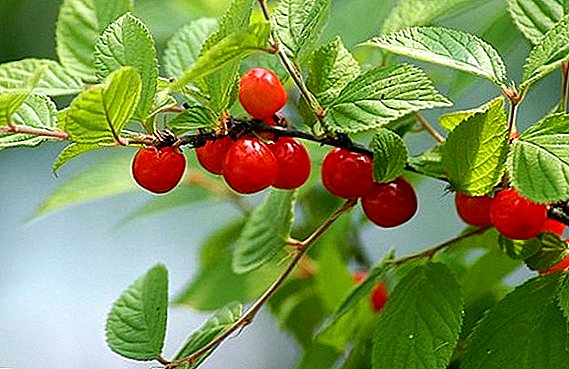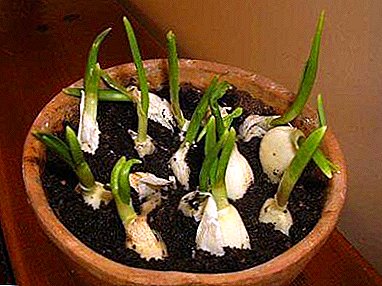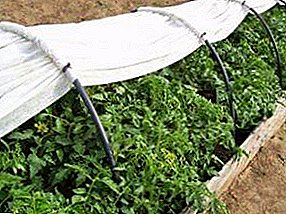
The greenhouse of the arcs - the most simple and low-cost construction for obtaining an early crop of vegetables in the summer cottage.
It is easy to install, easy to move to any desired place, and you can grow any thermophilic garden crop in it.
Frame material
In contrast to capital, heavy structures in the form of greenhouses, the design of the greenhouse of the arcs as light as possible. Its advantage is that installation takes little time. With the installation of such a greenhouse can handle even a child.
The greenhouse of the arcs can be installed anywhere in the area and moved, depending on what kind of culture is supposed to grow in it. It is very convenient in terms of compliance in the area of crop rotation.
The basis of this type of greenhouse arcs are made of plastic or metal. The main requirement for the material is its strength and flexibility at the same time. There are greenhouse arcs of the following types:
- - Arc of polyvinyl chloride. PVC is a thermoplastic material that is resistant to aggressive acidic and alkaline environments and is slightly toxic. Such arcs are light and at the same time strong enough.
- - Metal arc. They are manufactured industrially from thin metal pipes or independently from thick wire.
- - Polypropylene arc. In this capacity, a plastic pipe is used, cut into pieces of the required length. The main condition for choosing is the ability of pipes to bend easily, to take a rounded shape.
Which to choose?

Ready greenhouses from the arcs are now widely available. Each site owner makes his choice depending on the price and purpose of the structure. The most popular are the following greenhouses:
- "Dayas". Greenhouse on the basis of polymer arcs with embedded covering material. The diameter of the pipes is 20 mm, the length is 2 m. Fastening on the ground is carried out with the help of legs.
The number of pipes in the kit allows you to make a tunnel with a length of 4 to 6 meters. Width of covering material - 2.1 m. - "Snowdrop". The frame is made of PVC arches with a diameter of 20 mm. A covering - nonwoven covering material with a density of 42 g / m2. It has a different length (4,6,8 m). It is completed with legs for installation and clips for fastening.
- "Palisade". Steel arcs are used as a frame. Height - 50 - 60 cm. It is completed with a covering material or plastic film, special plastic clips for fastening the cover.
- "Gherkin". Height is 1 m, length is 5 m. A framework - a steel galvanized profile. Coating - plastic film with fasteners. It is completed with strips for fixing the film in the open state. The assembly is carried out with screws and nuts that fasten the arc to the base of the boards. The covering is fixed by the cords included in the set, for which grooves are provided in the arcs.
In addition to ready-made kits, you can purchase separately arc and suitable size covering material.
For what?
The greenhouse of coated arcs can be used from early spring to late autumn. You can grow any heat-loving crops, as well as seedlings.
For each type of plant, you can choose the height of the frame. In greenhouses of small height - 50-60 cm - seedlings and cucumbers are grown. Higher designs are designed for pepper, tomato, eggplant.
Pros and cons of designs
 Greenhouses from arcs comfortable with their mobility and ease of installation.
Greenhouses from arcs comfortable with their mobility and ease of installation.
For installation foundation construction is not required.
For winter, such a greenhouse is easily removed when folded, which means it saves storage space.
In addition, they cheap enough in comparison with expensive stationary greenhouses.
However, the greenhouse has a number of disadvantages:
- - External insulation coating is not durable enough and requires regular updates.
- - With all the lightness of the design, it can just as easily shift under the influence of a strong wind.
- - In the greenhouse can not hold additional heating, as in a stationary greenhouse.
Do it yourself
In the absence of the opportunity to purchase a ready-made greenhouse from arcs with a covering material, it can be made independently. The greenhouse consists of a frame and cover. Consider options for making greenhouse with their own hands.
The arcs that make up the frame - the main part that serves as the basis. On this basis, you can put any covering material that can be replaced as needed. There are several options for making arcs:
- - From the hose and wire (or wicker). An old hose not used for its intended purpose is cut into blanks into which metal wire or willow rods are inserted. Then each piece is given an arched shape. Arcs are stuck into the ground along the length of the bed at a distance of 50-60 cm from each other.
- - From plastic pipes. The basis for the arcs are metal pins stuck into the ground along the length of the beds. Bent tubes are put on them. The length of the pipe segments depends on the desired height of the greenhouse. But it is not recommended to make segments more than 3 m in length - a greenhouse of such a height will be unstable and it will be inconvenient to care for plants in it. For the strength of such a structure, an additional pipe can be screwed on top with a wire.
- - PVC pipes. For such a greenhouse, it is necessary to make a frame of wooden planks, to which the bent sections of pipes should be attached. Pipe material with this design is not stuck into the ground and does not corrode.
- - From the metal profile. This frame is durable and stable, but for its manufacture will need special equipment - pipe bender. With this device, the pipes are given the desired shape. Since the greenhouse requires a pipe of small diameter, a manual pipe bender will cope with this task.

You can see several simple greenhouses from arcs with covering materials in this video:
Choice of covering material
For the successful cultivation of vegetables in the greenhouse, the choice of covering material is important. It must meet the following requirements:
- - Good to pass the sun's rays.
- - Maximum protect plants from cold air.
- - Have sufficient strength for long term use.
All these qualities have two types of material:
1. Foil.
A wide selection of films for greenhouses and hotbeds of different widths, price and quality is on sale. The cheapest option is the usual plastic film. But its price is the only plus. It is quite thin, and you can only use it for one season, at least two.
More durable, although somewhat expensive, are reinforced or bubble wrap film materials.
Moreover, such materials due to their thickness can withstand lower temperatures and better protect plants from adverse conditions.
2. Non-woven materials.
 They are very popular among vegetable growers.
They are very popular among vegetable growers.
Any brand of such material vary in thickness. The lightest material is a density of 17g / m2.
The densest in thickness - 60 g / m2.
The best option for shelter greenhouses, combining sufficient density and excellent breathability is the density of 42g / m2 ...
Film cover frame at the beginning of the season, before planting plants and when sowing seeds in the ground. The fact is that such a coating helps the soil to warm up quickly and retain maximum heat to improve the seedlings.
Then, when the crops have sprouted or seedlings are ready for planting in the greenhouse, the film coating is replaced with non-woven material. This coating allows the plant to breathe, which means it prevents the plants from overheating. Replacing non-woven material is carried out at the onset of heat.
IMPORTANT! It is not recommended to cover a greenhouse from arcs with a thin non-woven material, as it will break under the influence of friction and is unlikely to serve you even until the end of one season.
Installation rules
Prepare arcs, covering material and stones or bricks. The prepared place is dug up to the required width. Depending on the greenhouse design, we install the arcs, sticking them into the ground at a distance of 50-60 centimeters from each other, or fasten them to the prepared frame. We make additional fastenings with ropes. Wire, slats.
We cover the frame with prepared covering material and fix it to the bottom with bricks or stones. If the design provides additional mounting for covering material, we also install them.
Your greenhouse is installed in the right place and everything is ready for planting a garden crop in it. Now the plants are protected from possible frost and the harvest is guaranteed.



